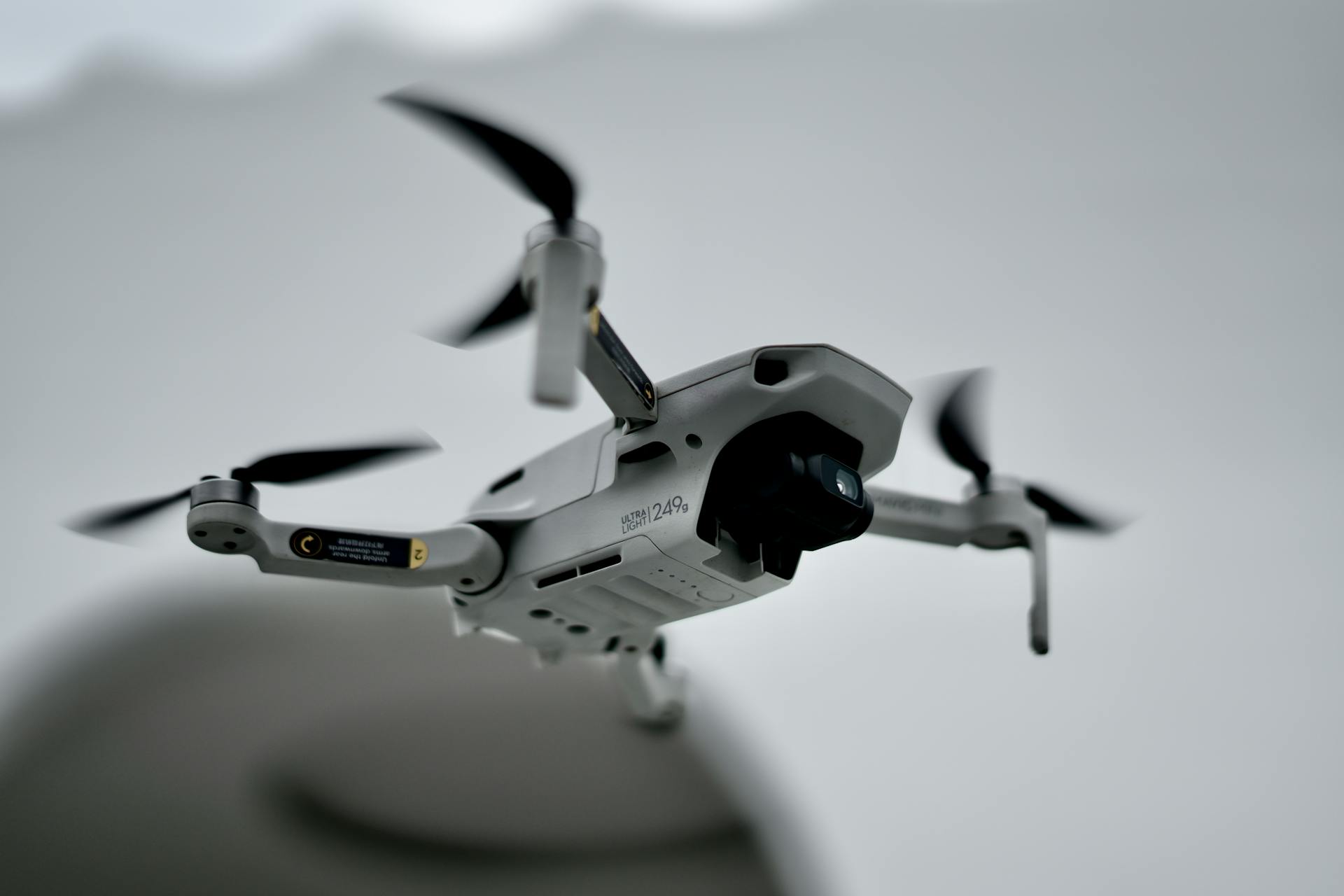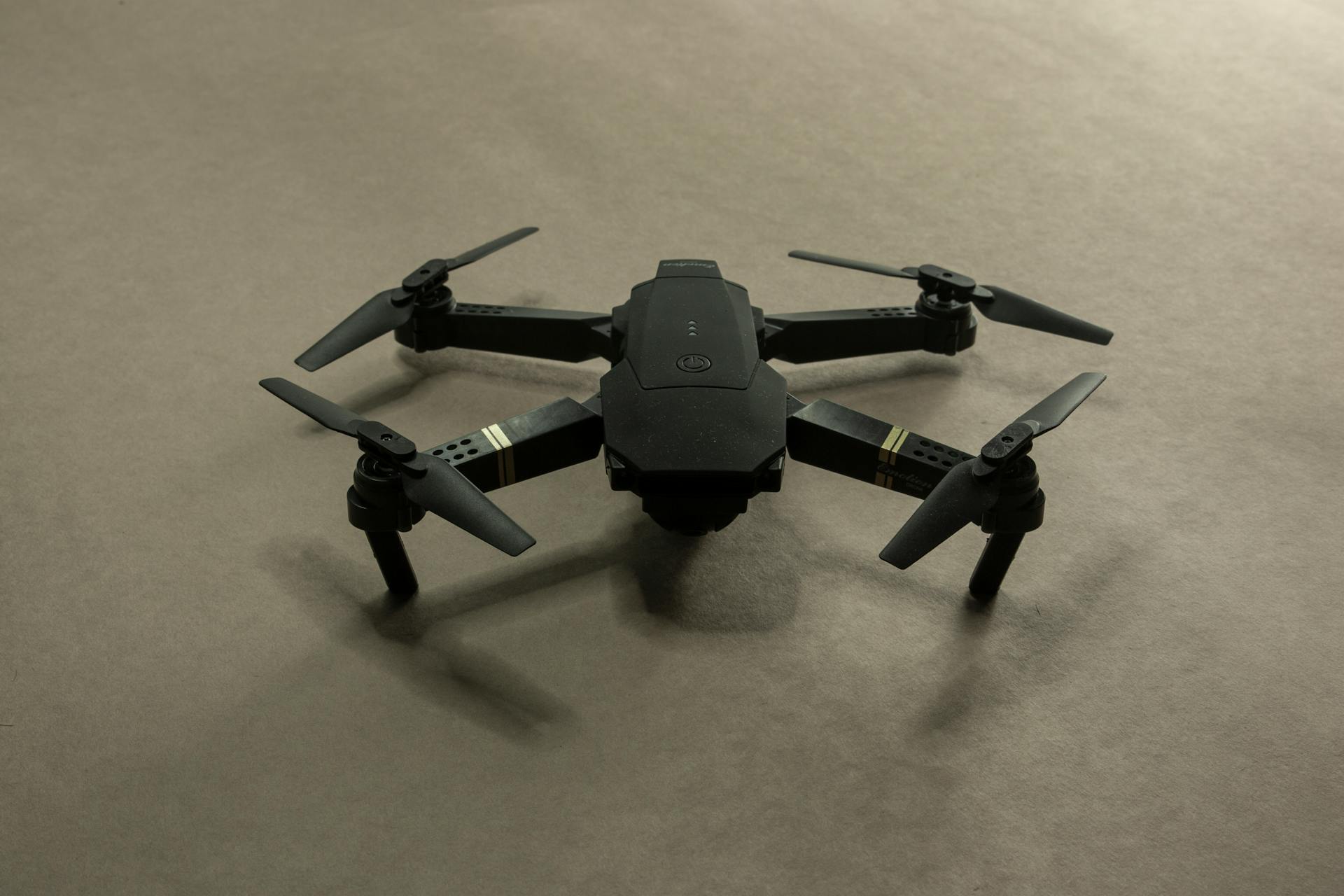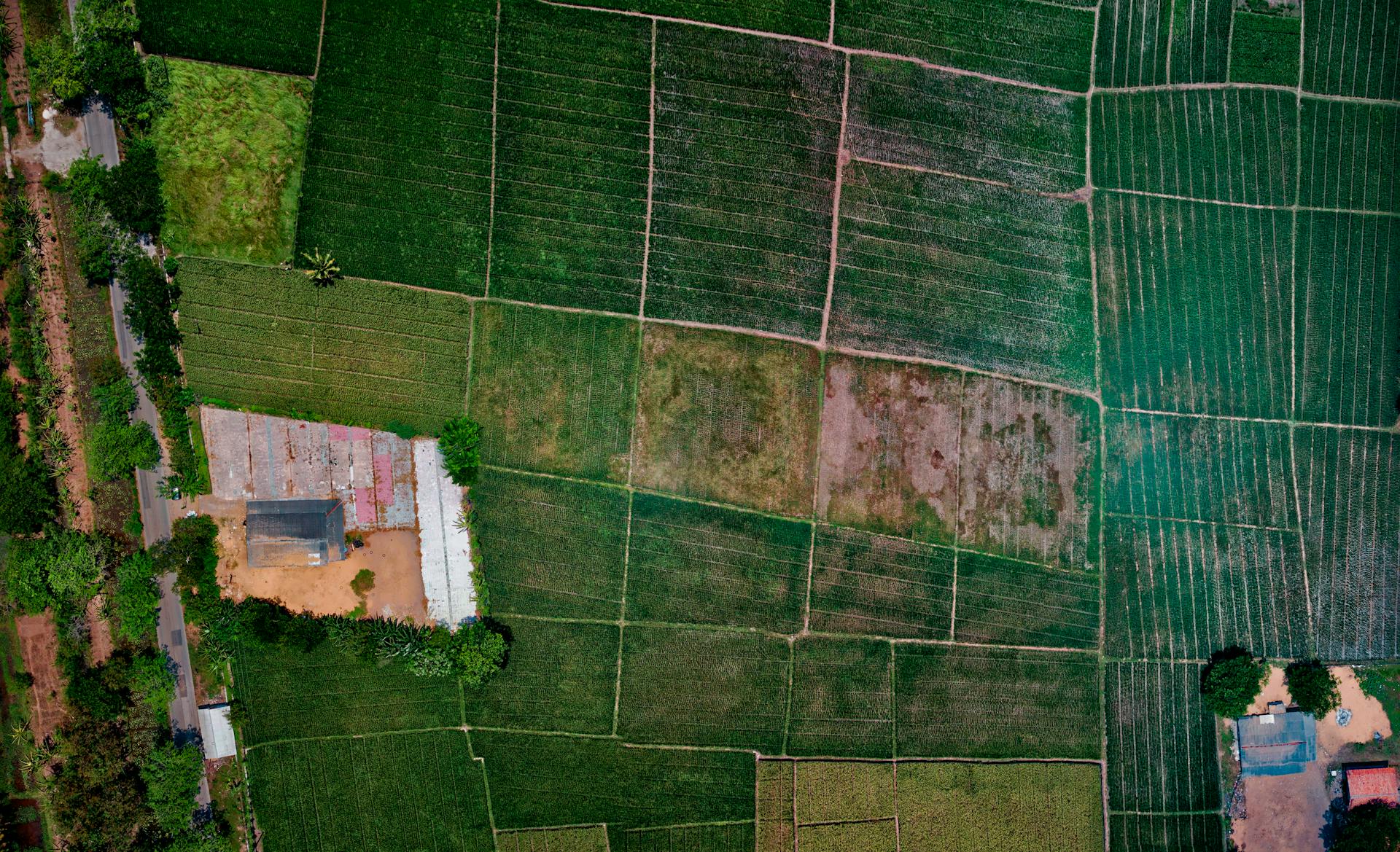
Military drones come in various shapes and sizes, from small, handheld models to large, fixed-wing aircraft. Some drones are designed to be stealthy, with a low profile and minimal visible features.
The MQ-9 Reaper, a popular military drone, has a wingspan of over 66 feet and stands over 11 feet tall. This size allows it to carry a significant payload, including cameras and missiles.
Other drones, like the Nano Hummingbird, are incredibly small, weighing in at just 19 grams and measuring 10 centimeters in length. This tiny drone is designed for surveillance and can fit in the palm of your hand.
These diverse designs reflect the different purposes and environments in which military drones are used.
Types of Drones
Military drones come in a variety of shapes and sizes, each designed for specific tasks. The MQ-1 Predator, for example, was developed for reconnaissance and surveillance.
The MQ-1 Predator was equipped with cameras and sensors, and could be armed with AGM-114 Hellfire missiles for precision strikes. Its upgraded version, the MQ-1B Predator, featured improved avionics and communication systems.
A fresh viewpoint: Ar Drone 1
The MQ-1C Gray Eagle is a larger and more advanced variant of the Predator, designed for longer endurance and increased payload capacity. It's been used for a wide range of missions, including reconnaissance and combat operations.
The MQ-9 Reaper, also known as the Predator B, is a larger and more capable successor to the MQ-1 Predator. It's armed with a variety of munitions, including Hellfire missiles and precision-guided bombs.
Here are some of the key types of military drones:
- MQ-1 Predator: reconnaissance and surveillance
- MQ-1B Predator: intelligence, surveillance, and reconnaissance (ISR) missions
- MQ-1C Gray Eagle: reconnaissance, surveillance, and combat operations
- MQ-9 Reaper: reconnaissance, surveillance, and combat operations
- MQ-9B SkyGuardian: border surveillance, maritime patrol, and disaster response
- SeaGuardian: maritime surveillance and patrol missions
- MQ-20 Avenger: reconnaissance and strike missions with jet-powered stealth capabilities
The MQ-9B SkyGuardian and SeaGuardian are designed for both military and civilian applications, including border surveillance and maritime patrol.
Drones in Action
Military drones are designed to perform a variety of tasks, including reconnaissance, surveillance, and combat missions. They can fly for hours or even days at a time, gathering vital information that helps commanders make informed decisions.
Some drones are equipped with advanced sensors that allow them to detect and track targets from great distances. These sensors can include cameras, radar, and infrared detectors.
Drones have proven to be highly effective in combat situations, particularly in areas with limited access or hostile terrain.
Here's an interesting read: Ace Combat 7 Drones
The Predator: A Game-Changing Drone
The MQ-1 Predator was the original Predator drone developed for reconnaissance, surveillance, and target acquisition. It was equipped with cameras and sensors and could be armed with AGM-114 Hellfire missiles for precision strikes.
This drone was a significant improvement over earlier models, and its capabilities were utilized by the United States and its allies for a wide range of military and security applications. The MQ-1 Predator has been retired from active service.
The MQ-9 Reaper, also known as the Predator B, is a larger and more capable successor to the MQ-1 Predator. It is armed with a variety of munitions, including Hellfire missiles and precision-guided bombs.
Here are some key features of the Predator drones:
The MQ-9B SkyGuardian is designed for both military and civilian applications, including border surveillance, maritime patrol, and disaster response. Its enhanced endurance and autonomous capabilities make it a valuable asset for various tasks.
Spy Satellite
The RQ-1 Predator was a reconnaissance version of the Predator UAV, designed for unmanned reconnaissance missions. It had a simple and lightweight design, allowing it to carry a payload of up to 450 pounds in addition to its 100-gallon fuel tank.
Readers also liked: Predator Drone Military
The RQ-1's large fuel tank and lightweight design made it a great asset for reconnaissance, enabling it to stay in the air for up to 24 hours, fully loaded. This was a huge advantage over traditional reconnaissance sorties.
The RQ-1 featured a range of sophisticated monitoring equipment, including a full-color nose camera, variable aperture camera, and infrared camera for low-light and night viewing. These cameras could produce full-motion video and still-frame radar images.
The RQ-1's synthetic aperture radar (SAR) allowed it to see through haze, clouds, or smoke, providing a clear view of the enemy position. This information was transmitted in real-time to a command post, giving field commanders a significant advantage in planning troop deployment and movements.
The Predator's reconnaissance capabilities were a game-changer on the battlefield, allowing commanders to make quick and informed decisions about enemy capabilities.
Worth a look: Military Drone with Camera
Eight Answers
In many industries, drones have become an essential tool for collecting data and completing tasks.
Drones can fly up to 4 miles away from their controllers, which is useful for applications such as surveillance and search and rescue missions.
Drones are being used in agriculture to inspect crops and detect problems early on, reducing the need for manual inspections.
With the ability to fly at high speeds, drones can quickly cover large areas and collect data in a short amount of time.
Drones equipped with specialized cameras can capture high-quality images and videos, even in low-light conditions.
Drones are being used in construction to inspect buildings and infrastructure, reducing the need for manual inspections and improving safety.
Drones can be equipped with sensors to detect obstacles and avoid collisions, making them safer to operate.
In emergency situations, drones can be used to quickly assess damage and provide critical information to first responders.
Suggestion: How Long Can a Military Drone Fly
Drones: Present and Future
Drones have come a long way in recent years, with many countries investing heavily in their development and deployment.
The first military drone was the Waco CG-4, a glider drone used by the US military in World War II.
Military drones are now used for a variety of tasks, including surveillance, reconnaissance, and combat.
The MQ-9 Reaper is a popular military drone used by the US military for combat missions.
Drones are equipped with advanced sensors and cameras, allowing them to gather intelligence and transmit real-time video feeds back to commanders.
The RQ-4 Global Hawk is a high-altitude reconnaissance drone used by the US military for surveillance missions.
In the future, drones are expected to play an even more significant role in military operations, with the development of autonomous systems and swarming drones.
The US military is currently developing a new generation of drones, including the MQ-25 Stingray, a carrier-based drone designed for refueling and reconnaissance missions.
Readers also liked: Us Drone Aircraft
Frequently Asked Questions
What is the difference between a military drone and a regular drone?
Military drones are larger, heavier, and more versatile than regular drones, often used for combat roles and weighing over 600 kilograms. Their unique capabilities play a crucial role in modern warfare, making them a key asset in military operations.
How do you detect military drones?
Military drones can be detected using various technologies, including radio frequency analysers, acoustic sensors, optical sensors, and radar, which can identify and track their presence. These detection methods can help identify the type and location of drones, providing valuable information for security and surveillance purposes.
Sources
- https://airandspace.si.edu/stories/editorial/predator-drone-transformed-military-combat
- https://science.howstuffworks.com/predator.htm
- https://www.dw.com/en/a-guide-to-military-drones/a-39441185
- https://aviation.stackexchange.com/questions/21766/why-are-military-drones-shaped-so-strangely
- https://www.darkreading.com/cyber-risk/military-drones-present-and-future-visual-tour
Featured Images: pexels.com


